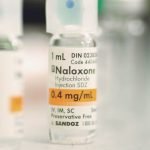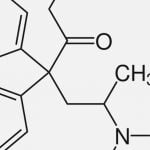How Methadone Maintenance Became The First Pharmacological Treatment For Narcotic Addiction
During the 1960s, there was a surge of heroin abuse in this country. So much so, in fact, that it became a public health problem. During those days, addiction was seen as a lifestyle choice associated with criminal and antisocial behavior. In 1962, however, Vincent P. Dole, a Rockefeller researcher, started to look at it as an unresolved health problem as part of his role as New York City’s Health Research Council’s chairman. He was the first to propose that addiction is a disease, and particularly a metabolic disease that manifested in behavior.
“The most important principle to recognize is that addiction is a medical disease. And, as a medical disease, it’s the responsibility of the medical profession.”
So committed was Dole to understanding the problem that he made it the sole focus of his laboratory research. Prior to this, his focus was on metabolism and obesity. However, he felt he needed to devise a pharmacological approach to treating the chronic illness of heroin addiction. This eventually resulted into the development of the Methadone Maintenance Treatment, or MMT.
The Development of MMT
By the end of 1963, Dole attracted clinical investigator Mary Jeanne Kreek and psychiatrist Marie Nyswander to his research project. Together, they conducted a study of heroin addiction at the Rockefeller University Hospital. Within six months, they understood the potential of MMT, moving away from the concept of using methadone for short term detox option only.
What the team’s study showed was that there are a number of key benefits of methadone maintenance treatment. “It’s not a perfect medication, it’s not without side effects, and it’s not for everyone – but methadone maintenance treatment (MMT) offers significant advantages over the use of heroin or the illicit abuse of prescription opiates. If you or someone you love needs help for an opiate addiction, methadone maintenance treatment deserves consideration.”
Specifically, the study found that:
• Methadone reduces heroin cravings.
• Methadone stops withdrawal symptoms.
• Methadone is non-euphoric, meaning people do not get high from it. This effect is known as “narcotic blockade”.
• Methadone only needs to be taken once per day.
The study conducted by Dole and his team was repeated by others with similar results. Long term studies were also conducted, and those were pivotal in the FDA approval of the drug in 1972, which was when methadone started to become an official treatment option.
“For nearly three decades, methadone hydrochloride (6-dimethylamino-4, 4-diphenyl-3-heptanone hydrochloride) has been the primary means of treating opiate addiction. Approved by the Food and Drug Administration (FDA) in 1947 for analgesic and antitussive uses, methadone was shown to be effective in treating opiate addiction in the mid-1960s and was approved by FDA for this use in late 1972.”
Of interest is also the fact that Mary Jeanne Kreek developed a method to analyze and measure levels of opioids and methadone in the blood and tissue. It was this that enabled researchers to understand the long-acting properties of the drug. The team truly changed the way addiction is treated.
Did They Do Enough?
Today, MMT continues to be controversial. That said, it is also accepted as the most effective form of addiction treatment. Additionally, the trend and use of Methadone is increasing.
“While the number of facilities with OTPs has remained constant at around 1,100 to 1,200 since 2003 (8 to 9 percent of all substance abuse treatment facilities), the number of clients receiving methadone on the survey reference date increased from about 227,000 in 2003 to over 306,000 in 2011.”
It is believed that around one million people around the world now use MMT to help combat their opiate addiction. While this is just a fraction of the number of people who suffer from an opiate addiction, this is mainly due to barriers to access the treatment, rather than due to the ineffectiveness of MMT.
For their work, Dole and Nyswander received the first ever National Drug Abuse Conference annual award in 1978. By 1982, the New York Urban Coalition, the Committee of Methadone Program Administrators, and the New York State Division of Substance Abuse Services started the Nyswander-Dole Award, which continues to be hosted by the American Association for the Treatment of Opioid Dependence (AATOD), Inc.
Medication-Assisted Treatment
“AATOD has been the number one advocate, resource, and trainer for the field of medication-assisted treatment for opioid addiction since its inception. Given today’s challenges, that role is more important than ever and AATOD continues to enthusiastically accept those challenges for all of us in the field; patients, medical staff, clinicians, researchers, manufacturers, and regulators.”
Thanks to the work of Dr. Dole and his team, there has been a tremendous increase in the understanding of addiction. While MMT is still controversial and certainly not accepted by all, it is undeniable that it has helped hundreds of thousands of people the world over. What is perhaps even more vital is Dr. Dole’s overall legacy.
“The underlying theme in Dr. Vincent P. Dole’s work is the effect of metabolism on behavior. This led to groundbreaking investigations at The Rockefeller University in electrophoresis, lipids, obesity, addiction, and the development of methadone maintenance in 1964 with his late wife, Dr. Marie E. Nyswander. Dr. Mary Jeanne Kreek, a research resident in his laboratory in 1964, is now continuing addiction research as a professor at Rockefeller. Dole developed methadone detoxification in the New York City jail system and office-based methadone medical maintenance with Nyswander. His major concern was to resolve the stigma that methadone patients encounter.”
Methadone Success Rates
Unfortunately, the stigma of addiction still exists. Nevertheless, there is now greater acceptance of the concept that addiction is not a lifestyle choice nor a sign of weakness. People with addiction are victims of circumstances and develop a disease for which the medical community must provide treatment.
There continue to be significant failings that perpetuate the stigmatization of addicts, particularly through the criminal justice system. The focus is on incarceration, hoping that people will magically come out of the system “cured” and free from substances.
In reality, most addicts who enter the system come out just as addicted as before. Fortunately, it’s possible to beat your addiction and start living free from the chains of the disease, contact (855) 976-2092 to learn more.
Sources
[1] Bierer MD, M. (2017, January 25). Is Addiction a “Brain DIsease”? Retrieved from Harvard Health Publishing – Harvard Medical School: https://www.health.harvard.edu/blog/is-addiction-a-brain-disease-201603119260 [2] Bell, J., & Zador, D. (n.d.). A risk-benefit analysis of methadone maintenance treatment. – PubMed – NCBI. Retrieved February 14, 2019, from https://www.ncbi.nlm.nih.gov/pubmed/10738842 [3] Rettig, R., & Yarmolinsky, A. (n.d.). Read “Federal Regulation of Methadone Treatment” at NAP.edu. Retrieved February 14, 2019, from https://www.nap.edu/read/4899/chapter/2 [4] Substance Abuse and Mental Health Services Administration, Center for Behavioral Health Statistics and Quality. (April 23, 2013). The N-SSATS Report: Trends in the Use of Methadone and Buprenorphine at Substance Abuse Treatment Facilities: 2003 to 2011. Rockville, MD. Retrieved From: https://www.samhsa.gov/data/sites/default/files/N-SSATS%20Rprt%20Trnds%20Use%20Methadone%20&%20Buprenorphine%20at%20SA%20Trmt%20Facs%20%2003-11/N-SSATS%20Rprt%20Trnds%20Use%20Methadone%20&%20Buprenorphine%20at%20SA%20Trmt%20Facs%20%2003-11/sr107-NSSATS-Buprenorph.htm [5] American Association for The Treatment of Opioid Dependency. (n.d.). AATOD | About Us. Retrieved February 14, 2019, from http://www.aatod.org/about-us/




Leave a Reply
Want to join the discussion?Feel free to contribute!